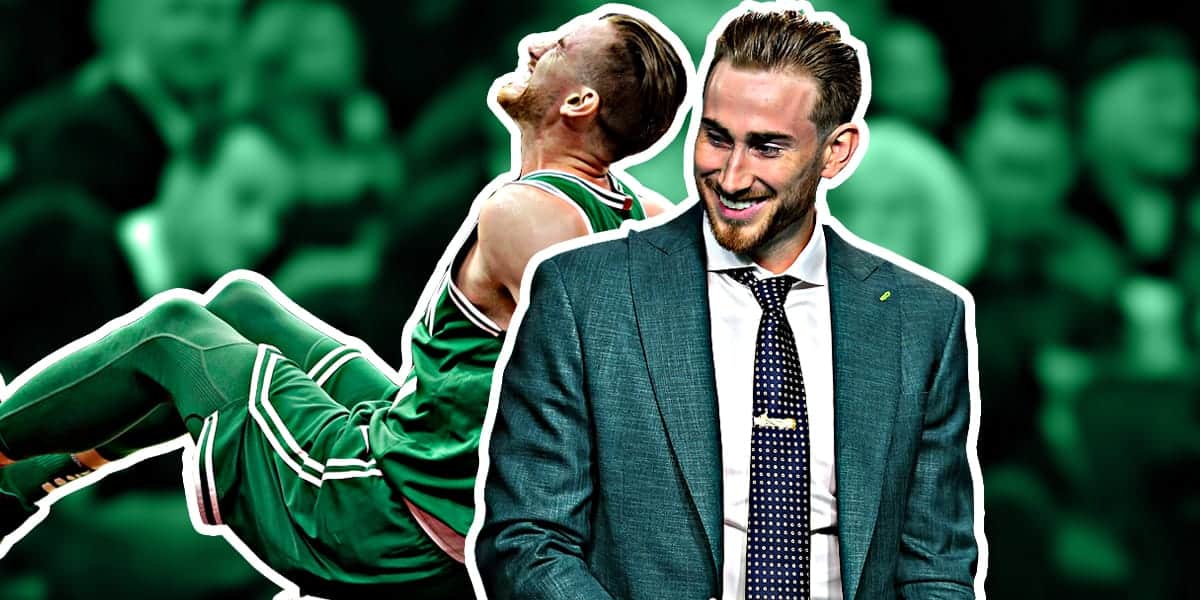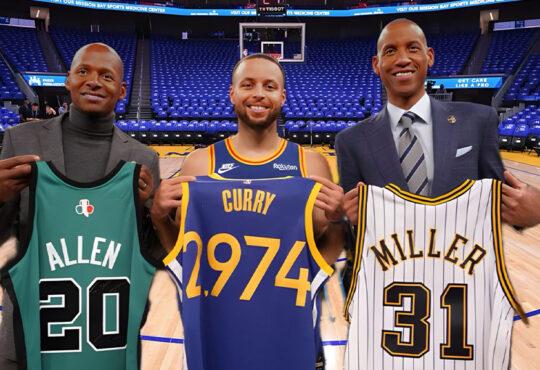
Do injured NBA players go to games?
Do injured NBA players go to games? The NBA hosts a grueling 82-game season for all its teams. All teams will deal with injuries of their players during the course of this long season. Knee, ankle, and back injuries cause players to have to sit out a game or two, or many more for more serious injuries. The NBA gives strict rules to the teams on how to deal with injured players.
According to the rules, NBA teams must maintain 12 active players on their roster during the regular season. Teams can carry 11 players on the active roster, but for no more than two consecutive weeks. When a player suffers an injury and cannot play, the team places him on the injured list, allowing another player to take his place on the active list. Teams must have at least eight players dressed and ready to play in a regular-season game.
NBA teams can carry a maximum of three players on their inactive list. Players in the past had to sit out at least five games when put on the inactive list because of injury. Today, an injured player can sit for a single game, then be eligible to play the next game.
An injured player must wear street clothes both during pregame warm-up and the game itself if the team has been placed on the inactive list. The team can call up another player to replace the injured player for that game, and subsequent games if needed.
An NBA team still includes an injured player’s salary in its team total salary, under the salary cap regulations. The exception would be if the player had to retire because of medical reasons resulting from the injury.
Do injured NBA players go to games?
According to the collective agreement between the League and the Players Association, injured players are permitted and expected to attend their team’s games.
In cases when the injury is severe and a player requires further assessment, treatment, or recovery time they may be allowed to stay away and undergo the necessary work in order to get back on the court as soon as they can.
You have seen quite frequently, NBA players that are injured are sitting on the bench in their street clothes, cheering the team on.
The factor of individuality plays a massive role when it comes to injured players. Some athletes are not able to go with their teams and attend games, while others might stand up in stretches and root for them. We need to make some differences between home and road games.
Normally when teams hold matches on their own courts, players can go and attend games without further assessment. As they do not need to travel which can cause them inconvenience. You will probably see such players sitting near the court, or places that are specifically allocated for guests of the team.
As for road games, things could be different. For example, if a player is forced to remain in hospital then he will not go to attend the road games.
On the other hand, certain players take time to rehabilitate and take care of themselves so that they can be available for further matches.
Injury ratio and how they affect the game?
For professional athletes, injuries can be life- and career-altering events, and unfortunately, researchers have shown rising trends in injury rates ranging from 12.4% to 15% within the NBA.
Injuries can bring negative consequences for many stakeholders. First and foremost, overcoming injuries and regaining healthy form pose lofty challenges for athletes and can potentially interfere with their career goals.
At one extreme, injuries requiring surgical intervention can be career-ending, with as many as 39% of individuals unable to return to the NBA after Achilles tendon reconstruction to as few as 14% unable to return after anterior cruciate ligament (ACL) reconstruction.
Some evidence has suggested a decline in the number of games and minutes per game played in the season after the injury by those who returned to participation after surgery compared with healthy controls. Non–season-ending injuries, such as sprains or inflammatory conditions, accounted for approximately half of the games missed due to injury, suggesting that even minor injuries have long-term implications for players’ health.
The effects of injuries also extend to the organizations with which the athletes are under contract. Regardless of the number of injured players on a team, the remaining healthy roster must continue to compete, and evidence has suggested that team performance is also affected.
Beyond performance declines, injuries have financial repercussions for organizations. Across the league, missed games due to injuries accounted for $344 million in player salaries in the 2014–2015 season, with specific organizations losing from $3.5 million to $28 million. Efforts to identify potential associations between observable basketball game performance measures and injury risk are lacking.
Whereas little is known that might aid in reducing injury rates, researchers have learned much about specific injury prevalence, with congruent conclusions as to which injuries are most common, which injuries lead to the most time missed, and the proportion of injuries occurring during competition.
Investigators have examined postoperative outcomes of severe injury events and indicated that most individuals returned to sport; however, their findings were mixed regarding whether postoperative performance declined relative to pre-injury performance.
Other authors have shown the potential importance of fatigue and workload as injury risk factors. Last, researchers found no association between physical demographics and injury rates but had mixed conclusions regarding the relevance of age or experience as risk factors.
Sprained Ankle Injury: How do NBA Players treat sprained ankles?
As Los Angeles Lakers ‘ Anthony Davis can certainly tell you, ankle sprains are one of the most common injuries in the NBA. This has, unfortunately, cost dozens of players many games sitting on the bench, but the NBA has certified methods to help their athletes recover.
Most players who have played basketball have suffered a sprained ankle at some point in their careers. The most common ways this injury occurs is after a jump, when landing badly, or when stepping on another player, in both cases twisting the ankle.
What is a sprained ankle?
A sprain is an injury to a ligament, with structural damage as a result of a forced or sudden movement of the joint, in which the ligament is subjected to a stretch greater than it can withstand. The most common is that of the External Lateral Ligament (LLE).
Depending on the severity of the injury, we distinguish three types:
Grade 1 sprain: a simple stretching with slight fibrillary tears occurs. There is some swelling and pain. Recovery takes only a few days, a maximum of two weeks.
Grade 2 sprain: a greater elongation occurs, with the consequent rupture of some fascicle of the ligament and the joint capsule may also be affected. Inflammation, hematoma, and pain appear. Recovery time is longer, ranging between 2 and 5 weeks, including relative immobilization for the first few days.
Grade 3 sprain: there is an almost complete tear of the ligament, sometimes complete tears are also included. The pain is very intense, a great inflammatory response appears hematoma and laxity in the joint. For it to heal, immobilization at first. Recovery time ranges from 6 to 8 weeks.
Treatment for sprained ankles
When a player suffers a sprain ankle injury, a sports medicine physician examines the injured foot and ankle looking for swelling, areas of pain, and possible looseness of the joint. When there is trouble walking or bones are sore in specific areas, x-rays may be done to look for broken bones. This is to better assess the grade of injury.
Depending on that it could go from something as simple as putting some ice in it, some anti-inflammatory medicine, and a wrap to requiring a special boot or in the worst case surgery. But overall, it’s mostly about not putting weight on the ankle and letting it rest, so physical activity is reduced significantly.
As the last phase of rehabilitation, and to stabilize the joint and prevent players from injuring themselves again, proprioceptive training is recommended, which serves to work on coordination and strength, improving reflex capacity.
The problem usually comes with recovery times, as most players cannot afford the luxury of losing games, so they start playing again before the recommended times are over.
Load management policy
While the league still sees the importance of big-name draws suiting up on national TV to attract viewers, it wants to come off as understanding of athlete fatigue following shortened vacations for playoff competitors. So when it announced fortified guidelines for load management during prime time broadcasts, it made clear it wouldn’t be so strict for most other contests.
NBA leadership has been in continuous conflict with teams about their execution of load management strategies but doesn’t have the leverage it did previously to act with a heavy hand.
It’s expected that teams coming off long postseason runs will be particularly careful with their best players in the early going before ramping up intensity in the second half of the campaign.
What is load management in the NBA?
Load management is an offshoot of modern sports science research that can help predict when players are most vulnerable to injury and in need of protection. Teams have realized they can dramatically cut injury risk by planning rest days during road back-to-backs — and those who are deep enough can sometimes win regular-season games without their stars.
Unlike in other sports, where no single player is expected to pull more physical weight than his or her teammates, isolation-based basketball offenses take a disproportionate toll on top scorers. That’s part of the reason certain players are given regular time off throughout the season when healthy while others are asked to play every contest.
Why did load management become a big deal?
Over the past decade, there has been a growing sentiment among teams and players that it’s not worth putting stars at risk for individual regular-season games. That’s led to big names sitting out for national TV games in which the league wants them to participate.
Kawhi Leonard, who sat out most of a season when he was in San Antonio under mysterious conditions, is probably the most recognized member of the load management club, but veteran stars around the league have joined the trend. It’s here to stay, even if the NBA tries to keep it under control for its grandest occasions.
Part of the load management controversy comes from a broader cultural narrative about modern athletes being “softer” than the people who came before them. Days off are held up as proof of that sentiment. One of the many problems with the take, though, is that it implies rest is completely driven by the players. To the contrary, it’s usually an organizational strategy crafted with the influence of front-office executives and medical staffers. Trust between all parties is essential. Players are cognizant of their long-term well-being and willing to fight for their health, but it’s also in the interest of their franchises for them to be at full strength for the playoffs.
NBA load management rules for national TV games
NBA teams are not permitted to rest healthy players during games broadcast on national TV, or during road games when there are no “unusual circumstances.”
But the set of acceptable “unusual circumstances” for locally broadcasted away games has expanded this year to include prior workload and injury history, among other factors. In other words, NBA rest guidelines are going to be loose outside of the national TV games.
Teams will be fined at least $100,000 for breaking national TV protocol, according to an NBA memo, though investigation and subsequent enforcement methods are still unclear. That’s a per-game rate, meaning multiple illegal rests would lead to much larger total charges. A similar policy was in place last year.
Penalties for misconduct in games outside of national TV windows (ESPN, TNT, ABC) are less clear and might not be assessed. The league has discouraged teams from resting more than one healthy player per game or anyone on the road barring “unusual circumstances” that according to ESPN include a player’s age, injury history, COVID-19 recovery, season and career workload, and schedule issues.
What’s challenging for the NBA is being able to prove a team is breaking its load management policies — while truancy might seem obvious to fans in the context of a season, organizations are often able to point to minor past injuries in their explanations to the league.







